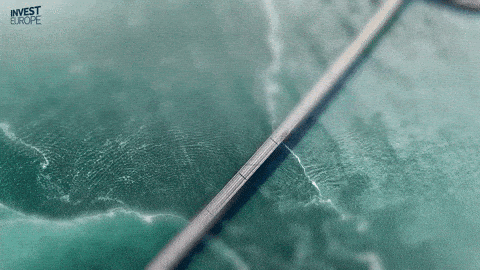- Pow Rocket Press
- Posts
- BIHL group, a good investment for risk averse investors
BIHL group, a good investment for risk averse investors
Simplywallst analytics shows a good debt to equity and strong balance sheet for BIHL group

Good morning 😃🌞☀️ Let’s get into today’s article, and we’re talking about the BIHL group Let’s explore how good this company is for investment.
Financial Health Spotlight: Is BIHL Group a Smart Investment for Young Professionals?
Welcome, Young Investors!
Suppose you’re a young professional looking to grow your wealth. In that case, you’ve likely heard of Botswana Insurance Holdings Limited (BIHL Group), a prominent player in the insurance and financial services sector in Botswana. With its ticker symbol “BIHL” on the Botswana Stock Exchange, this company has caught the attention of many budding investors. But before you dive in, let’s break down BIHL’s financial health to see if it’s a solid addition to your portfolio. We’re diving into data from a 2014 financial analysis to give you a snapshot of the company’s balance sheet strength—perfect for understanding its stability as a potential investment.
BIHL’s Financial Health: A Strong Foundation
BIHL Group passes 5 out of 6 financial health checks, making it a compelling option for those seeking a stable investment. Here’s what the numbers tell us:
• Low Debt, High Stability: BIHL boasts a debt-to-equity ratio of just 1.9%, meaning it has very little debt compared to its equity. With total debt at P60.23 million and shareholder equity at P3.009 billion, the company is far from over-leveraged—a great sign for risk-averse investors.
• Cash-Rich Position: The company is sitting on a hefty cash reserve of P18.25 billion. This substantial cash pile means BIHL can weather economic storms, invest in growth opportunities, or even return value to shareholders through dividends or share buybacks.
• Debt and Interest Coverage: BIHL’s operating cash flow covers its debt by an impressive 855.4%, and its earnings before interest and taxes (EBIT) cover interest payments by 615.3x. In simple terms, BIHL has no trouble managing its debt obligations, which is a green flag for financial health.
• Assets vs. Liabilities:
• Total Assets: P20.38 billion.
• Total Liabilities: P17.29 billion.
• BIHL’s short-term assets (P18.6 billion) far exceed its short-term liabilities (P205.8 million), showing strong liquidity to handle immediate obligations.
• Even better, those same short-term assets also cover its long-term liabilities (P17.1 billion), reinforcing its ability to manage debt over the long haul.
A Closer Look: What’s Working and What’s Not
BIHL’s balance sheet paints a picture of a financially sound company, but let’s break down the key strengths and one area of caution:
Strengths:
• Liquidity Powerhouse: With short-term assets of P19 billion against short-term liabilities of just P206 million, BIHL can easily cover its near-term obligations. This is a big plus for young investors who value stability.
• More Cash Than Debt: BIHL’s cash reserves (P18.3 billion) dwarf its total debt (P60.23 million), giving it a strong buffer against financial challenges.
• Debt Management: The company’s ability to cover its debt with operating cash flow and interest payments with earnings is exceptional, making it a low-risk bet in terms of debt management.
Area of Caution:
• Rising Debt-to-Equity Ratio: Over the past five years (as of 2014), BIHL’s debt-to-equity ratio has increased from 0% to 1.9%. While this is still very low, it’s a trend worth watching. A rising ratio could signal that the company is taking on more debt relative to its equity, which might increase risk over time.
Why BIHL Could Be a Good Fit for Young Professionals
For young professionals new to investing, BIHL offers several appealing qualities:
1. Stability Over Speculation: BIHL’s low debt, high cash reserves, and strong liquidity make it a safer investment compared to highly leveraged companies. This is ideal if you’re looking to build a portfolio with a strong foundation.
2. Potential for Growth: With significant cash on hand, BIHL has the flexibility to invest in new opportunities, expand its operations, or reward shareholders—potentially leading to future growth in stock value or dividends.
3. Low Risk, High Confidence: The company’s ability to cover its debt and interest payments with ease means you’re less likely to face surprises from financial distress.
However, keep in mind that this data is from 2014. While it gives us a solid historical perspective, BIHL’s financial health may have evolved since then. For instance, the slight increase in the debt-to-equity ratio could have continued—or the company may have reversed the trend. You’ll want to check more recent financial statements or analyst reports to make an informed decision.
Next Steps for Young Investors
If BIHL Group sounds like a potential fit for your portfolio, here’s how to proceed:
• Dig Deeper: Look for BIHL’s most recent financial reports (check their investor relations page or platforms like the Botswana Stock Exchange website) to see if the company has maintained its strong financial position.
• Diversify: Even with a stable company like BIHL, it’s wise to spread your investments across different sectors to reduce risk.
• Consult a Financial Advisor: If you’re new to investing, a professional can help you assess whether BIHL aligns with your financial goals and risk tolerance.
BIHL Group’s financial health in 2014 shows a company with a rock-solid balance sheet, low debt, and plenty of cash to support future growth. For young professionals looking for a stable, low-risk investment in the insurance sector, BIHL could be a great starting point—but always do your homework with the latest data!
Disclaimer: This article is based on historical data from 2014 and is for informational purposes only. Always conduct your research or consult a financial advisor before making investment decisions.